Heavy equipment is a vital part of the construction industry. Heavy equipment is your lifeline whether you’re a construction company, road-builder, excavator operator, or mining company. While it may seem intimidating and challenging to operate, not everyone can handle machinery like heavy equipment. These machines are susceptible to different factors, causing them to malfunction quickly.
It helps you execute your job to perfection. Heavy equipment carries a great responsibility and therefore requires special attention and care. To ensure your heavy equipment’s safety and optimum performance, it’s essential to follow the proper precautions. This blog discusses 10 safety tips for hauling heavy equipment that will help you stay safe while fulfilling your duties.
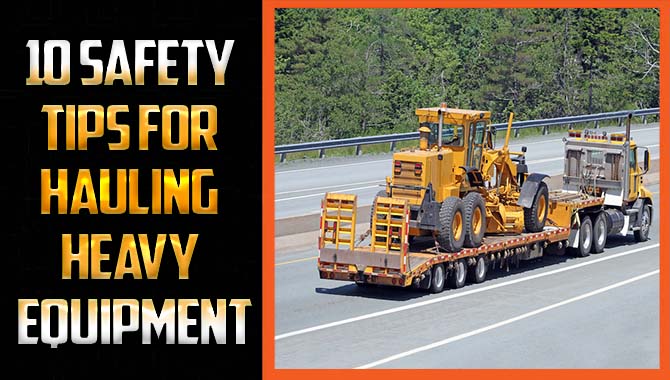
What Are 10 Safety Tips For Hauling Heavy Equipment?
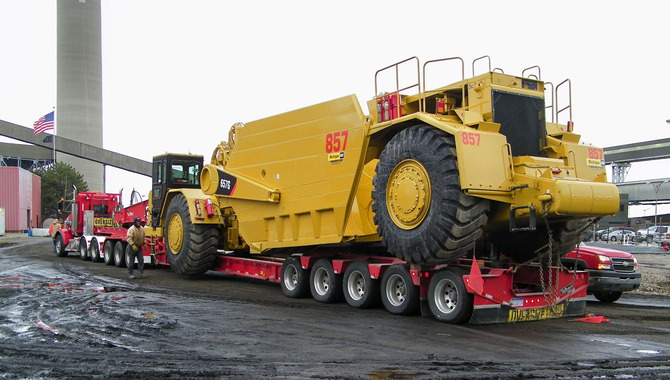
Heavy machinery describes any machinery used for construction or heavy-duty tasks. You can safely use heavy machinery with the proper precautions without harming yourself or the environment. When loading heavy equipment for hauling, safety is vital.
Always use the correct equipment for the job to avoid overloading the equipment. This will help to prevent damage to the machinery and prevent accidents. Here are some tips on how to safely operate heavy equipment.
1.Use The Right Vehicle And Trailer
When hauling heavy equipment, using the right vehicle and trailer is essential. The weight of the equipment will determine the size and type of trailer necessary. Before loading heavy equipment into a trailer, verify the load capacity. It is also essential to use chains and hoses to secure the equipment to the trailer.
In addition, be careful in inclement weather when loading heavy equipment. Make sure to keep an eye on the weather and prepare for possible delays due to inclement weather. These safety tips can help you safely haul heavy equipment without risk of damage or injury.
2.Load Securing And Distribution
Securing heavy equipment before loading it into a truck or trailer is essential. Distribute loads evenly throughout the vehicle to prevent dangerous situations. Place a strap or chain around each piece of heavy equipment and secure it to the load in several locations to do this. Additionally, We can use safety straps and safety hooks to bind burdens securely in place. Solid fabric typically makes these safety straps able to support the weight of a heavy load.
Additionally, A safety hook can be attached to objects in a work area to help ensure the stability of the load during transportation. In addition, All personnel hauling the equipment must be aware of the safe loading parameters.
3.Driver Training And Experience
As a driver of heavy equipment, safety is of utmost importance. It’s essential to ensure that the driver is adequately trained and experienced when hauling heavy equipment. Drivers must have a valid driver’s license and proof of insurance. They must also wear safety helmets and protective clothing. Both ends should support the load, with the vehicle in good condition.
Do not exceed the maximum weight capacity; respect the vehicle’s weight limit. In addition to safety precautions, drivers must monitor their bags to ensure safe operation. Overall, safety is a vital aspect of driving heavy equipment and must be prioritized when operating such vehicles.
4.Road Laws And Local Regulatory Requirements
When loading or unloading heavy equipment, safety should always be a priority. Following the applicable road laws and local regulatory requirements when transporting heavy equipment is important. For instance, use a security system to prevent equipment from falling or moving in transit. Additionally, wear protective safety gear such as safety helmets and gloves when hauling heavy equipment.
When moving heavy equipment, be aware of any obstructions on the roadway and adjust your driving accordingly. Additionally, never attempt to move heavy equipment if you are impaired by alcohol or drugs. Remember to stay safe and follow all safety tips whenever you are handling heavy equipment.
5.Optimize Route Planning
To minimize the risk of injury, follow these safety tips when hauling heavy equipment. First and foremost, optimize your route planning to avoid obstructions and obstacles. Next, use a lifting device that is appropriate for the weight and size of the equipment you are loading. Finally, be careful with cables, chains, or straps used to secure the equipment.
In addition to safety gear such as gloves, eye protection, and a respirator, it’s also a good idea to wear protective clothing, such as a safety jacket or pants. Additionally, never overload your vehicle or trailer to prevent accidents. Following safety tips like these can ensure a safe and successful loading and unloading process for your heavy machinery.
6.Check And Double-Check The Load
It’s essential to ensure that the weight of the equipment is evenly distributed throughout the load. Before moving the bag, checking for stability is a good idea. Make sure that all load-restraining devices are in place and properly adjusted.
Additionally, ensure that all safety chains, straps, and other safety equipment are attached to the equipment and ready for use. Finally, use a lifting device that is appropriate for the weight and size of the equipment being carried. Be extra cautious when handling heavy equipment in tight spaces like around corners.
7.Protecting People And Equipment
It is vital to ensure safety while loading and unloading heavy equipment. When loading heavy equipment, it’s essential to use a secure lifting system to handle the weight. It’s also good to stay alert to possible hazards while hauling equipment.
However, brute force should never be used to move heavy equipment. Instead, use a cautious, steady pace when moving heavy machinery. Additionally, stay alert for safety tips during loading and unloading operations.
8.Wear Appropriate Safety Gear
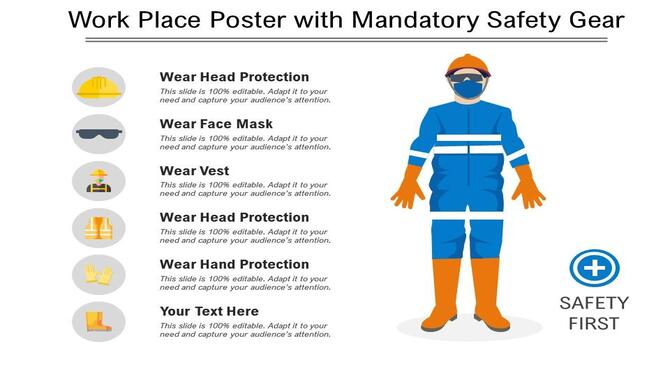
It’s a dangerous task to load and unload heavy equipment. However, you can take a few simple safety precautions to protect yourself while loading and unloading heavy machinery. First and foremost, wear appropriate safety gear, such as safety glasses, a hard hat, and sturdy shoes. You also need to be careful when moving heavy equipment and be aware of the potential for falling objects.
When loading or unloading heavy machinery, make sure to have a plan for safely transporting the equipment once it’s loaded. And lastly, follow your employer’s safety guidelines when working with heavy machinery. You can ensure a safe and efficient task by taking these safety precautions while loading and unloading heavy machinery.
9.Use Spotters When Hauling Heavy Equipment.
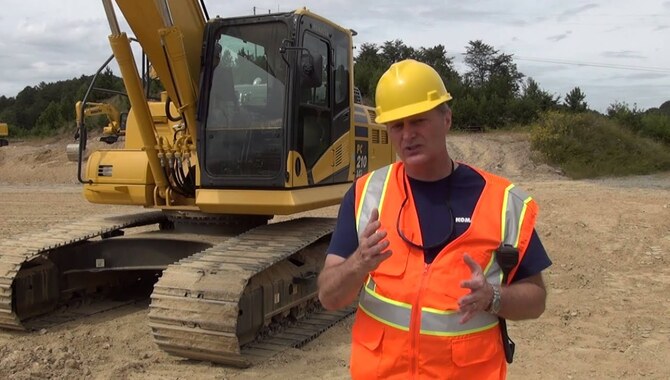
It is vital to use safety precautions when loading or unloading heavy equipment. One of the best ways to protect yourself is to use spotters. Spotters can help you safely move heavy equipment without risking your safety. They can also provide safety knowledge and support for the task at hand.
Before loading and unloading heavy equipment, ensure you use a harness and weight limit appropriate for your hauling equipment. Additionally, wear protective clothing and gear such as safety boots, safety glasses, rubber gloves, and a hard hat when loading or unloading heavy equipment. These safety precautions will help ensure a safe and successful job.
10.Use A Jack To Support The Load When Hauling Heavy Equipment.
When loading or heavy unloading equipment, use a jack to support the weight. When hauling equipment uphill or across slippery surfaces, be careful. Children should always be kept from the kit and discouraged from touching or playing with the moving parts.
Always wear safety gear, including safety glasses, safety belts, and comfortable shoes when working with heavy machinery. Finally, use a designated loading zone to avoid accidents. These safety tips can help ensure that you safely work with heavy equipment.
Why Is Heavy Equipment Dangerous?
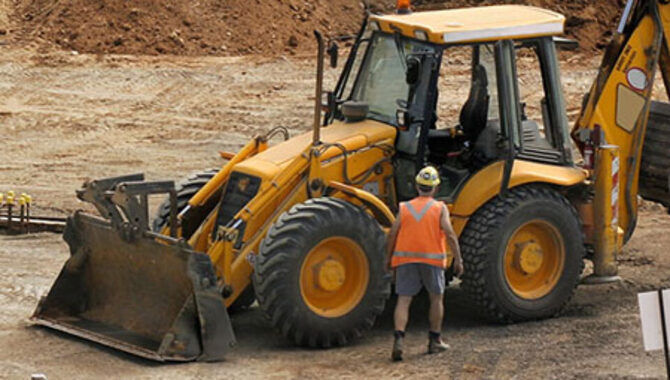
Heavy equipment is dangerous because it can cause severe injury or death if used incorrectly. Heavy equipment can be hazardous for several sons: it’s large and heavy, it has sharp edges and corners, and it’s to move accidentally. All of these factors make it more likely that someone will be injured or killed when using heavy equipment.
Heavy equipment operators need to be very careful when operating this type of equipment. They must always be aware of their surroundings and use common sense when moving around the machine. They should also keep an eye on the worker in front of the device to ensure they’re safe and never follow them without checking with the operator.
Conclusion
A loading ramp is your first line of defense against heavy equipment accidents. They provide a safe, efficient loading platform to load heavy equipment and ensure the driver can safely unload it. But they don’t protect you from heavy equipment. Use spotters to help unload heavy equipment and ensure your workers are trained to use heavy equipment safely.
Double-check your work location, ramp, and vehicle for correct placement before moving forward when loading or heavy unloading equipment. Also, ensure your workers are adequately protected by wearing safety gear such as hard hats and safety glasses. Together, we can help spread awareness about the importance of using safe hauling techniques when working with heavy equipment.
Frequently Asked Questions:
1.What Are The 5 Equipment Safety Tips?
Ans: Here are the 5 equipment safety tips to follow when hauling heavy equipment:
- Make sure your equipment is in good condition and operates properly.
- Choose the correct type of equipment for the job.
- Wear a safety harness when hauling heavy equipment.
- Use caution when crossing boundaries or climbing ladders.
- Never leave your equipment unattended.
2.What Are The Safety Rules For Heavy Equipment?
Ans: There are a few safety rules to follow when operating heavy equipment.
- Always wear a safety helmet when working with heavy machinery.
- Always use a hand truck or dolly to move heavy equipment instead of carrying it yourself.
- Avoid overloading the equipment.
- Make sure the brakes are in good working order.
- Stay alert while operating heavy equipment.
3.What Should You Never Do While Hauling A Load?
Ans: When hauling a load, it is essential always to use safety gear. This includes wearing a harness and a secure load restraint system. Ensure your vehicle is in good condition and properly maintained at all times. Follow the traffic laws in the area you are working in. And finally, stay aware of your surroundings and monitor your surroundings for any potential danger.
4.What Are The 3 Main Hazards Of Heavy Machinery Operation?
Ans: The three main hazards of heavy machinery operation are operator fatigue, machine overload, and falls. Operator fatigue can be caused by working long hours or being required to work in a hazardous environment. Overloading the machine can lead to failure, injury, and even death. Falls can occur while moving the device or while working on it.
5.What Are Some Common Mistakes That People Make When Hauling Heavy Equipment?
Ans: Common mistakes people make when hauling heavy equipment include not using the right tools for the job, not following safety guidelines, and not setting up the equipment properly. By following these simple tips, you can avoid making these mistakes and ensure a safe and successful hauling experience.
Follow safety guidelines when hauling heavy equipment. These guidelines include wearing protective gear such as a helmet, eye protection, and gloves and using restraint systems such as tie-downs or straps to secure the equipment.

Leave a Reply